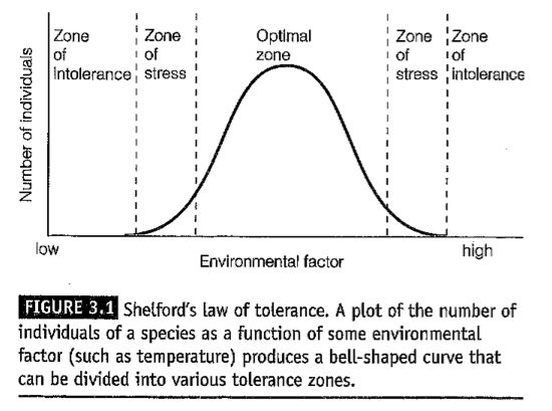Essential idea: Community structure is an emergent property of an ecosystem.
The image above shows savannah grassland. The community of animals (here grazing Antelope, Zebra and Wildebeest) are present only due to the grassland environment, which in itself is a function of the grazing animals. Grazing is a key element along with fire and soil fertility that maintains the savannah. Without these elements in balance the savannah would either be succeeded by bush and forest or deteriorate into desert. A good example of how a community can be an emergent property of an ecosystem, whilst still being a critical part of the ecosystem.
Understandings, Applications and Skills
| C.1.U1 | The distribution of species is affected by limiting factors. |
| C.1.U2 | Community structure can be strongly affected by keystone species. |
| C.1.U3 | Each species plays a unique role within a community because of the unique combination of its spatial habitat and interactions with other species. |
| C.1.U4 | Interactions between species in a community can be classified according to their effect. |
| C.1.U5 | Two species cannot survive indefinitely in the same habitat if their niches are identical. |
| C.1.A1 | Distribution of one animal and one plant species to illustrate limits of tolerance and zones of stress. |
| C.1.A2 | Local examples to illustrate the range of ways in which species can interact within a community. |
| C.1.A3 | The symbiotic relationship between Zooxanthellae and reef-building coral reef species. |
| C.1.S1 | Analysis of a data set that illustrates the distinction between fundamental and realized niche. |
| C.1.S2 | Use of a transect to correlate the distribution of plant or animal species with an abiotic variable. |
[Text in square brackets indicates guidance notes]
StartersWhat are keystone species? Learn by watching the video below.
|
Bees again - bees are a good example of the importance of a keystone species. Bees are under threat in many parts of the world. Learn more about their role in ecosystems and what their disappearance could mean to us.
|
Presentation and notes
The presentation is designed to help your understanding. The notes outline is intended to be used as a framework for the development of student notes to aid revision.
|
Use the Cornell style template to collate your own notes for Topic C.1 Species and communities.
|
Weblinks
|
Keystone Species
Keystone Species by National Geographic Keystone Species by Sctiable (Nature) Keystone Species Presentation by Washington University Niches and Competitive Exclusion Niches (includes competitive exclusion) by Bozeman Science Competitive Exclusion by LiweiCoastline |
Sampling Methods
Using quadrats by The Woodland Education Centre Quadrats by Intel Education Resources Rocky Shore Transect by the British Ecological Society |
Nature of scienceUse models as representations of the real world—zones of stress and limits of tolerance graphs are models of the real world that have predictive power and explain community structure. (1.10)
Shelford's law of tolerance is a useful tool to understand the relative abundance of a species and hence predict community structure. It plots the range of a biotic or abiotic factor that is tolerated by a species,. Because their is variability but within a population the limits of tolerance and where the zones of stress start is not always easy to measure. |
Theory of knowledge
Random samples are taken in studies involving large geographical areas or if limited time is available. Is random sampling a useful tool for scientists despite the potential for sampling bias?


